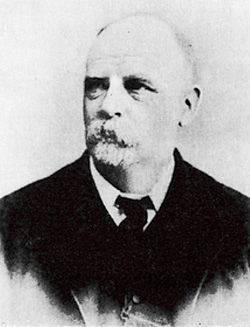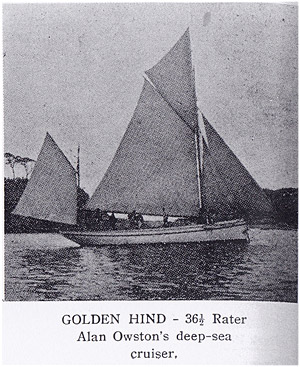- Top
- Publications
- Ocean Newsletter
- Time to Honour Yokohama-Based Alan Owston Who Amassed Famous Natural History Collections and Died Exactly 100 Years Ago
Ocean Newsletter
No.372 February 5, 2016
-
Time to Honour Yokohama-Based Alan Owston Who Amassed Famous Natural History Collections and Died Exactly 100 Years Ago
Mike GALBRAITH
Journalist, Kokusaika Training Consultant
Selected Papers No.21The natural history collections and specimens, including collections of fishes, sponges and bryozoa, created by Yokohama resident Alan Owston came to be widely known around the world. Given Owston's great impact on the development of marine biology in Japan, on the 100th anniversary of his death Japan's marine biology-related institutions should consider leading an initiative to borrow the Owston collections and specimens now abroad and exhibit them in Japan.
Selected Papers No.21 -
Living with the Ocean ~the 'Yui' project: connecting kids with their future~
Mari YASUDA
Research Associate, Bosaishi (Licenced Expert on Disaster Mitigation), International Research Institute of Disaster Science, Tohoku UniversityFive years have since Great East Japan Earthquake. From this region which suffered heavy damages, the "Yui" disaster mitigation project was borne, seeking to increase survival awareness among children based on lessons learned from the disaster. The project will soon celebrate its third anniversary since its conception. What is needed now is continued support so that whatever disaster that children may encounter, their perceptiveness, decisiveness and ability to act and respond to the situation can be put to maximum effect. -
Developing an Eye for Living Things and a Heart Attuned to Nature
Michi AMANO
Education and Outreach, Animal Health and Exhibition Department, Tokyo Sea Life ParkAt the Tokyo Sea Life Park we try to come up with ways to make sure that the experience and learning gained at the aquarium doesn't end there but continues in natural environments close at hand. Our hope is to see lively children at play in nature. With the goal of seeing even a single child discovering the wonder of living creatures and the fun of experiencing nature, we work hard at our educational activities at the aquarium.
Time to Honour Yokohama-Based Alan Owston Who Amassed Famous Natural History Collections and Died Exactly 100 Years Ago
Famous natural history collections and specimens, including collections of fishes, sponges and bryozoa, created in Yokohama by Alan Owston (1853-1915) have lain almost forgotten and unseen for decades in many of the world's leading natural history museums.
On the 100th anniversary of Owston's death, Japan's marine biology-related institutions should consider leading an initiative and collaborating with other non-marine natural history institutions in Japan to borrow the Owston collections and specimens now abroad and exhibit them in Japan. The collections and specimens relating to Owstons's close Japanese colleagues - MITSUKURI Kakichi, the Tokyo University zoology professor, fellow Tokyo University professor IIJIMA Isao, and AOKI Kumakichi, the most famous Japanese collector of fishes, could also be included.
 ■Alan Owston
■Alan Owston
(1853-1915)
Why Owston and why should Japan's marine biologists take the lead? Because it was in the field of marine biology that Owston made the biggest impact.
Alan Owston was born in Pirbright in Surrey near London, England on August 7, 1853. After leaving school, he boldly went to and worked in Shanghai. After six months he moved to Yokohama where he was to live from 1872 until his death on 30 November 1915.
After working in an office for several years, in 1878 Owston successfully launched his own business as an importer and exporter and this soon enabled him to devote a lot of time to his favorite interests - yachting and natural history.
Although he had no formal training, Owston began collecting, trading in, and often donating specimens of birds and fish, and later sponges and other forms of marine life, in Japan and also nearby countries where he acquired specimens from a network of other collectors.
One result of Owston's collecting endeavors, and another reason for his high reputation, is the number of species whose Latin names honor him, principally with the pseudo-Latin word Owstoni based on his surname but sometimes using his first name or including its initial. Examples are Acanthascus alani Ijima (a sponge) and Owstonia weberi (a fish). There is even one case - Storm-petrel Stonowa - where the Latin genus name is an anagram of Owston's surname and initial.
A revealing example is the Mitsukurina owstoni - the extraordinary deep-sea goblin shark sometimes referred to as a living fossil. The first recorded specimen was caught in Sagami Bay off Izu and acquired by Owston who then presented it to Mitsukuri, who brought it to the attention of American David Starr Jordan, then the world's leading ichthyologist, who selected a Latin name honoring both men.
Mitsukuri initiated the 1884 moves to establish the Misaki Marine Biological Station (MMBS) in Sagami Bay after his German Tokyo University natural history professor colleague Ludwig Doderlein (1855?1936) discovered Sagami Bay had one of the world's richest concentrations of marine fauna.
Owston bought many of his specimens from local shops and markets and some he acquired via local Japanese collectors. He collected both for pleasure and to sell, especially to wealthy collectors like Lord Rothschild and museums and universities in the US and Britain eager to acquire specimens from Japan.
The turning point in Owston's work as a collector of marine life came when, combining his interest in yachting with his interest in marine biology, he fitted his yawl-rigged 36? rater deep-sea cruising yacht, the Golden Hind,Ⅰ with dredging equipment and started dredging in search of benthyn marine life living in the deep water close to the coastline of Sagami Bay and Tokyo Bay.
Owston's dredging resulted in the discovery of a large number of new species and attracted the interest of Mitsukuri, and also the Japanese government to whom he supplied dredging equipment. Because the MMBS was unable to afford its own boat for ocean dredging until 1915, Owston sometimes took Mitsukuri and other MMBS marine biologists on his dredging trips and presented them with specimens.
Jordan stated that of his acquisitions in 1900 and 1911, "those obtained through the help of Mr. Owston and of Mr. Aoki are vastly more important than the others."Ⅱ
 ■Golden Hind
■Golden Hind
In1902 Owston sent 63 bottles, mainly bryozoans, of specimens from Sagami Bay and Tokyo Bay to Sydney Harmer at the Cambridge University Museum of Zoology and was paid 5 pounds sterling. These and other purchases from Owston were later transferred or sold to the Natural History Museum in London (NHM) and form the core of its 114-specimen Owston bryozoan collection.Ⅲ
The World Register of Marine Species (WORMS)Ⅳ lists 31 species with Latin names including Owstoni and 12 including Owstonia. It may seem a lot, but, of his Japanese colleagues, six different pseudo-Latin names referring to Iijima are in the names of 80 mainly sponge species, while Mitsukuri is honored in the Latin names of 57 species, with only Aoki appearing in the names of eight species. Of the 35 sponges in Owston's fabled sponge collection in London's NHM, 23 of the Latin names include the name Ijima and only one an Owston name.
In early October 1903 Owston's beloved Golden Hind was wrecked on rocks near Yokosuka during a typhoon and this was a severe setback for his dredging activities.
The invertebrate collections in the Smithsonian have 99 specimens collected by Owston and in many cases the accompanying information includes "Vessel: Golden Hind." In addition, Owston is also associated with 31 birds, 14 fishes, and two repliles in the museum.
Despite his fine collections, his growing worldwide reputation and his fine yachts, Owston struggled to survive financially towards the end of his life. On a visit to Japan in 1911, mentioned in his memoirs, Jordan wrote "I found Owston much distressed over the financial outlook."Ⅴ
Shortly before he died on 30 November 1915 Jordan helped Owston to sell his valuable fish collection of 1,364 Asian fishes to the Carnegie Natural History Museum in Pittsburgh. In the 1950s it sold or passed its collections of fishes to Chicago's Field Museum, whose database lists 1,461 fish specimens collected by Owston.

